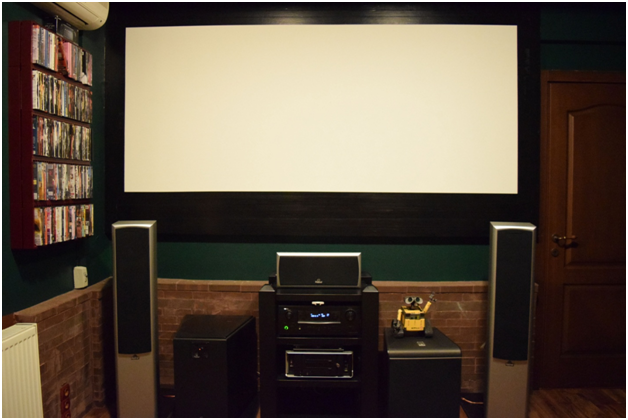Home cinemas are more popular than ever and it has almost become difficult to buy a television or hi-fi that has not been designed with a full cinematic set-up in mind. The problem with off-the-peg packages is that they neglect to mention that their product is only half a cinema. The other half is the room in which you place it.

The room changes your experience, sometimes disastrously. Sound and picture depend upon the acoustic qualities and ambient light around them. There are many things to control and getting all these right can be a lot more complicated than using the packaged remote control.
Automation
For truly luxurious home cinema, consider a wireless control box. Lighting, music, video and automated acoustic curtains can be integrated and controlled from a simple remote. Your screen can even glide down from the ceiling if the room is needed for other purposes.
In the UK home automation of this kind is available from specialists such as Digital Interiors, designers of home automation systems.

Sound
A balance of absorption and reflection is needed to achieve naturalistic acoustics, with reducing reflection usually your main problem. Tiles, hardwood, laminate and expanses of glass are a disaster for sound quality – sound becomes muddled and echoing, and bass tends to boom in small spaces.
Various devices are available to solve these problems, but relying on your ears and trial and error is arduous. A specialist installer with measuring equipment is usually needed to achieve the best results.
Fitting acoustic blackout curtains will be a big improvement, while a deep carpet will kill most ceiling to floor reflections. Acoustic panels can be positioned to shield other hard surfaces. You can get an idea of the directions of bouncing sound waves by using a mirror.
Screen
Contrast and viewing angles are slowly improving, but locating the screen with these issues in mind is still critically important. Light from windows never helps. Although it will not appeal to everyone, ambient light can be minimised by dark absorbent fabrics.
A common mistake is thinking bigger is always better. There is an optimal screen size for any room, but the ‘sweet spot’ – where viewing angles and acoustics work best – can accommodate more people at a greater distance. The ideal viewing distance is two to three times the diagonal screen measurement.


